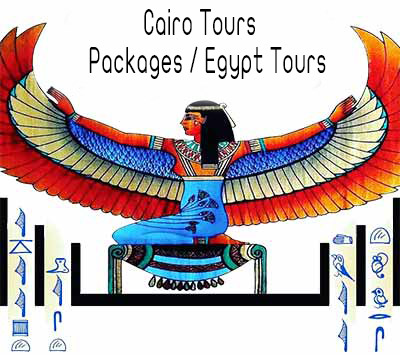It sometimes referred to as the El-Geniza Synagogue or the Synagogue of the Levantines, is situated in the Fustat part of Old Cairo, Egypt. According to local folklore, it is located on the site where baby Moses was found.
Its store room was found in the 19th century to contain a treasure of forgotten, stored-away Hebrew, Aramaic and Judeo-Arabic secular and sacred manuscripts. The collection, known as the Cairo Geniza, was brought to the University of Cambridge in Cambridge, England at the instigation of Solomon Schechter. It is now divided between several academic libraries, with the majority being kept at the Cambridge University Library.
Ben Ezra as an institution is ancient, and has occupied at least three buildings in its history. There have been many major and minor renovations. The current building dates to the 1890s.
In Encyclopaedia Britannica, a synagogue is described as "A prayer place for the Jews." In old Greek, it means: "The usual place where the Jews assemble to receive religious teachings and to worship." Some of these Temples were built close to a source of water, as much as for protection from any attack, not just for ablution!
The Synagogue of Ben Ezra in Cairo was originally named El-Shamieen Church, and is situated today behind the "Hanging church", the Synagogue once had an old copy of the Old Testament, and it was said that Ezra the Prophet (Al-Azir) had written it. Yet, It is believed that the site of the Synagogue where the box of Baby Moses was found.
Ben Ezra Synagogue was originally a Christian church that the Copts had to sell, to the Jews, in 882A.D in order to pay the annual taxes imposed by the Muslim rulers of the time, and therefore Abraham Ben Ezra, who came from Jerusalem during the reign of Ahmed Ibn Tulun, bought the church for the sum of 20,000 dinars.
Through the centuries, the Synagogue received extensive restorations and renovations. The current building dates back to 1892 after the original collapse.
It is built in the shape of a basilica (rectangle), consisting of 2 floors; the 1st dedicated to the men while the 2nd is dedicated to the women. The entrance is situated on the north side.
The 1st floor:
It is rectangular in shape, measuring 17m in length and 11.3m wide. It is divided into 3 parts, the largest being the middle one (4.75 m in width); these parts are divided by steel bars painted in a marble-like color.
There is a platform located in front of the sanctuary, where the rabbi stands to read the Torah. The lector platform is in an octagonal shape and is made of marble. A copper fence is situated on the 8th side of the platform, where the Torah, and its rolls, is rested.
There is a memorial Stella located in front of the platform. In the middle of this Stella is a top part consisting of 2 semi-arches carried on 3 pillars, with a height of 85cm. there are 2 rooms on each side of the Holy Ark on the 1st floor.
The Most Important Decorations of the Synagogue:
Geometrical Decoration:
This decoration goes back to the Turkish Period. It is clearly seen in the side halls with patterns such as star patterns, pentagonal patterns, and rectangles.
Floral decorations:
Used as a background for the geometrical patterns, they are also found around the Star of David in the middle of the ceiling. Here is a mixture of the Hatai and the Roman decorations, which are floral patterns and are called "Ottoman Arabesque". This decoration includes floral patterns, palmettos, and lotus flower.
The southeastern side of the top of the Torah closet is decorated with stalactites, on top of which is a semi-circle with ray decorations. The frame of the Torah Ark is a mimic decoration and on each of the two sides are 2 wooden columns with geometrical patterns. The 2 columns have stalactite capitals of the Ottoman period.
Torah ark
The style of the carving on the Torah ark door is incompatible with that of the Fatimid Caliphate (909–1171 CE), and is more representative of the Mamluk Sultanate (1250–1571 CE), specifically the 15th century. A medallion that decorates the door is designed with a motif common to bookbinding of that period. It is known that a 15th century fire in the synagogue damaged the bimah, or pulpit. One plausible theory is that wood from the damaged bimah was repurposed to make a new door for the Torah ark. The synagogue was repaired and renovated in 1488.
The door also has traces of paint that conservators have identified as being no older than 19th century. It is known that the synagogue was renovated in the 1880s, completely rebuilt in the early 1890s, and then remodeled in the early 20th century.
Discovery of the geniza and fourth building
Jacob Saphir was a Jew of Romanian birth whose family settled in Ottoman Palestine when he was a boy. He became a rabbi, and in 1859, took a world tour to raise money for the reconstruction of the Hurva Synagogue in Jerusalem, which had been destroyed by the Muslim authorities in 1721.
Saphir was the first to recognize the historic significance of the Ben Ezra geniza, which he described in an 1874 book. Jewish book collector Elkan Nathan Adler was the first European to enter the geniza in 1888, and he purchased about 25,000 documents. While the synagogue was being rebuilt from 1889 to 1892, the documents lay in an enormous pile out in the open. Egyptologist Count Riamo d'Hulst examined some of the documents in those years. In December 1896, Cambridge University instructor Solomon Schecter, who later became a prominent American rabbi, began the first in-depth academic investigation of the documents from the geniza, and arranged to have the remaining documents removed from Cairo to various university libraries.


